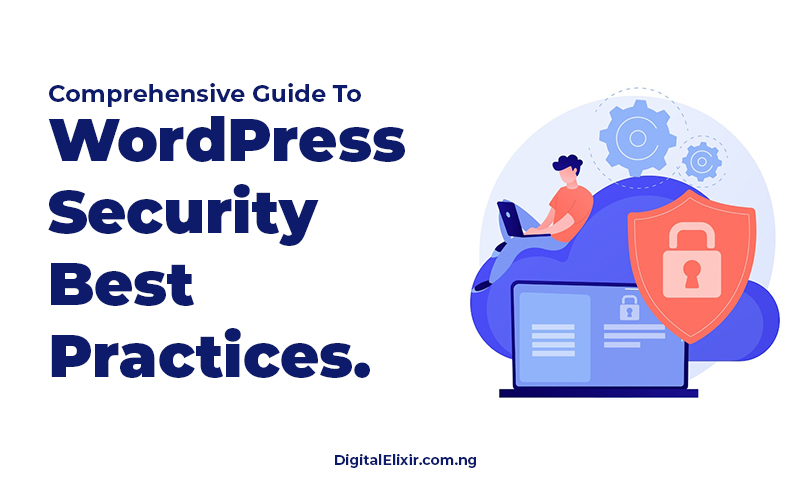Comprehensive Guide To WordPress Security Best Practices
WordPress has become one of the most popular platforms for building websites, powering over 40% of the internet. However, its popularity also makes it a prime target for hackers and malicious attacks. In this article, we’ll discuss essential WordPress security best practices to safeguard your website from potential threats.
Introduction to WordPress Security
WordPress is a content management system (CMS) that allows users to create and manage websites with ease. However, its widespread use makes it susceptible to security vulnerabilities. Ensuring the security of your WordPress website is crucial to protect sensitive data and maintain its functionality.
Choosing a Secure Hosting Provider
Selecting a reliable and secure hosting provider is the foundation of WordPress security. Look for providers that offer robust security features, regular backups, and excellent customer support. Some recommended hosting providers known for their security measures include SiteGround, Bluehost, and WP Engine.
Keeping WordPress Core, Themes, and Plugins Updated
Regularly updating WordPress core, themes, and plugins is essential for maintaining the security of your website. Updates often include patches for security vulnerabilities identified by developers. Make it a habit to check for updates regularly and apply them promptly to minimize the risk of exploitation by hackers.
Using Strong Passwords and User Permissions
Weak passwords are a common entry point for hackers attempting to gain unauthorized access to WordPress websites. Ensure that you and your users use strong, unique passwords that include a combination of letters, numbers, and special characters. Additionally, limit user permissions to only those necessary for their role to prevent unauthorized access to sensitive areas of your website.
Implementing Two-Factor Authentication (2FA)
Two-factor authentication adds an extra layer of security by requiring users to provide two forms of identification before granting access to the WordPress dashboard. Enable 2FA for all user accounts, including administrators, to protect against unauthorized login attempts.
Recommended Plugins
- Wordfence Login Security
- WP 2FA – Two-factor authentication for WordPress
- Login With Ajax – Fast Logins, 2FA, Redirects
- Two Factor Authentication
Securing File Permissions
File permissions dictate who can read, write, or execute files on your server. Set appropriate permissions for files and directories to prevent unauthorized access or modifications. In general, directories should have permissions set to 755, and files should be set to 644.
Installing a WordPress Security Plugin
WordPress security plugins offer additional layers of protection by scanning for malware, monitoring website activity, and implementing firewall rules. Popular security plugins such as Wordfence, Sucuri Security, and iThemes Security can help strengthen the security posture of your WordPress website.
Regular Backups
Regularly backing up your WordPress website ensures that you can restore it to a previous state in the event of a security breach or data loss. Schedule automated backups to occur daily or weekly and store backup files securely offsite or in the cloud.
Limiting Login Attempts
Limiting the number of login attempts helps mitigate the risk of brute force attacks, where hackers attempt to guess passwords repeatedly until they gain access. Use plugins or server configurations to enforce limits on login attempts and block IP addresses after multiple failed login attempts.
Disabling Directory Indexing and Listing
By default, some web servers may allow directory indexing, which exposes the contents of directories to anyone who visits the URL. Disable directory indexing and listing to prevent unauthorized access to sensitive files and directories on your WordPress website.
Securing the wp-config.php File
The wp-config.php file contains sensitive information such as database credentials and authentication keys. Protect this file by moving it to a higher directory level than the root of your WordPress installation and restricting access to it using server configurations.
Implementing SSL Certificate
An SSL certificate encrypts data transmitted between the web server and the user’s browser, ensuring secure communication. Install an SSL certificate on your WordPress website to encrypt sensitive information such as login credentials and payment details, enhancing overall security.
Monitoring Website Activity
Regularly monitor your WordPress website for unusual activity, such as unauthorized login attempts or file modifications. Use security plugins or web server logs to track changes and investigate any suspicious behavior promptly.
Regular Security Audits
Conducting periodic security audits helps identify vulnerabilities and weaknesses in your WordPress website’s security posture. Perform thorough scans for malware, review user permissions, and update security measures as needed to keep your website protected.
Conclusion
Implementing robust security measures is essential to safeguard your WordPress website against potential threats. By following the best practices outlined in this article, you can enhance the security posture of your website and protect it from malicious attacks.
FAQs
1. What is the importance of WordPress security?
– WordPress security is vital to protect sensitive data, maintain website functionality, and prevent unauthorized access by hackers.
2. How often should I update WordPress core, themes, and plugins?
– It is recommended to check for updates regularly and apply them promptly to minimize security vulnerabilities.
3. What are some recommended WordPress security plugins?
– Popular security plugins include Wordfence, Sucuri Security, and iThemes Security, known for their comprehensive security features.
4. Why is two-factor authentication (2FA) important for WordPress security?
– 2FA adds an extra layer of protection by requiring users to provide two forms of identification, reducing the risk of unauthorized access.
5. How can I perform a security audit on my WordPress website?
– Conduct regular scans for malware, review user permissions, and monitor website activity to identify and address security vulnerabilities.


